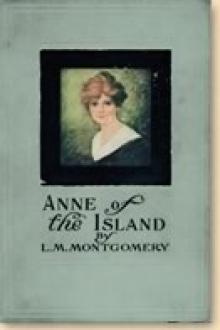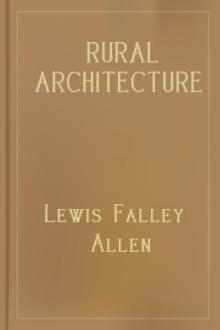A History of Art for Beginners and Students, Clara Erskine Clement Waters [best beach reads .txt] 📗

- Author: Clara Erskine Clement Waters
- Performer: -
Book online «A History of Art for Beginners and Students, Clara Erskine Clement Waters [best beach reads .txt] 📗». Author Clara Erskine Clement Waters
In 1794 and 1795 he made elaborate drawings of Rochester, Chepstow, Birmingham, Worcester, Guildford, Cambridge, and other towns, for magazines. In 1796 he did the same for Chester, Bristol, Leith, Peterborough, and Windsor. Within the next four years he completed the circuit of twenty-six counties in England and Wales, and he also exhibited twenty-three highly finished drawings of cathedrals and churches. He was slow to undertake oil-painting, preferring the more rapid touch and the light-and-shade effect of the crayon, or the delicate and beautiful effects of water-colors. He was always greater as a painter in water-colors than in oils, and it is claimed by Redgrave that “the art all but began with him,” and that his water-color paintings “epitomize the whole mystery of landscape art.” Some of his paintings in this line have been sold at enormous prices, and even in his own day his water-color picture of Tivoli sold for eighteen hundred guineas. Turner became as fond of Northern Yorkshire—which he first visited in 1797—as he was of Southern Kent. He found there a great variety of scenery, from the sweet and peaceful to the ennobling and grand. He visited and made studies from all the old cathedrals, castles, and abbeys, and in 1798 he exhibited pictures of Fountain and Kirkstall Abbeys, Holy Island Cathedral, Buttermere Lake, Dunstanborough Castle, as well as “Morning Among the Corriston Fells.” He found in Yorkshire also some of his warmest friends and most munificent patrons, notably Mr. Hawkesworth Fawkes, of Farnley Hall, whose house was adorned with fifty thousand dollars’ worth of Turner’s pictures. Some additions to Farnley Hall were designed by Turner, and he was always a welcome visitor. Here he sketched, and at intervals enjoyed himself greatly in hunting and fishing. It is said that the Farnley portfolios still contain sketches not only of the hall and its precincts, but of coast scenes, Swiss views, drawings of birds, illustrations of the Civil War, and, more especially, of fifty-three remarkable drawings of the Rhineland regions, done at the rate of three a day; these last were offered by Turner to Mr. Fawkes on his return from the Continent for the sum of five hundred pounds, and the bargain was closed at once. When Mr. Fawkes visited London he spent hours in Turner’s private gallery, but was never shown into the painting-room. Indeed, very few persons were ever allowed there. Once, when Turner dined at a hotel with Mr. Fawkes, the artist took too much wine, and reeled about, exclaiming, “Hawkey, I am the real lion—I am the great lion of the day, Hawkey.” When Mr. Fawkes died, ended Turner’s visits to Farnley. He never went there again, but when the younger Fawkes brought the Rhine drawings up to London for him to see again, he passed his hand over the “Lorelei Twilight,” saying, with tears in his eyes, “But Hawkey! but Hawkey!” When Mr. Wells, an artist of Addiscomb, died he mourned his loss bitterly, and exclaimed to his daughter: “Oh, Clara, Clara, these are iron tears! I have lost the best friend I ever had in my life!” In this family all the children loved him. He would lie on the floor, and play with them, and the oldest daughter afterward said: “Of all the light-hearted, merry creatures I ever knew, Turner was the most so.” But in 1797 Turner had a bitter disappointment which warped and distorted all his after-life. A young lady to whom he had become attached while a schoolboy at Margate, was engaged to be married to him. He had been absent for two years on sketching tours, and the step-mother of the young lady had intercepted and destroyed his letters, so that at last she believed the representations made that Turner had deserted her. She became engaged to another, and was about to be married, when Turner appeared, and pleaded passionately that she would return to him. She thought that she had been trifled with, and held by her refusal, and did not find out the wrongs done by the step-mother until it was too late. This disappointment led to greater self-concentration and stingy money-getting until it became the absorbing passion of his life, so that the artist passion was dominated by it.
It would take up too large a portion of this book to describe even briefly Turner’s travels and works. Only a bare outline can be given. In 1800 he became an Associate of the Royal Academy. He moved into a more commodious house at 64 Harley Street. During this year he exhibited pictures of Caernarvon Castle and the “Fifth Plague of Egypt;” also fine views of Fonthill Abbey, the new palace of Beckford, with whom he spent much time. The only portrait for which Turner ever sat was painted in 1800 by George Dance. It shows a handsome young man, with a full but receding forehead, arched eyebrows, a prominent nose, a massive chin, and a sensual mouth. His thick and wiry hair is tied behind, and he wears a coat with an immense cape. By this time full-bottomed wigs had gone out of fashion, and the old barber abandoned his business to go and live with his artist son. In 1801 Turner exhibited pictures of St. Donat’s Castle and Pembroke Castle in Wales, the Salisbury Chapter-house, an autumn morning in London, the destruction of the Median army, and Dutch fishing-boats in a gale. He had begun his contest with Claude by painting pictures of classical subjects in Claude’s manner. Turner was elected Royal Academician in 1802, and exhibited several notable oil-paintings, signed with all his initials, which he thenceforth used. The Academy had been quick to recognize Turner’s genius, and he was always its faithful, conservative, and zealous friend. As an auditor, councillor, or a visitor he was scrupulous, and he attended general meetings and formal dinners with the same promptitude and certainty with which for forty-five years he sent his pictures to the annual exhibitions. He was a peacemaker in debates, but in business he was irresolute. In 1802 he visited the Continent for the first time, travelling in France, Switzerland, and Italy, and everywhere making sketches. At this time he carried sketch-books in which he jotted everything—all manner of drawings and outlines of nature and architecture, notes of local gossip, chemical memoranda, notes of expenses, tavern bills, views of coasts and cities, ruins, castles, manufacturing works, and detached figures. One book gives views about the Simplon Pass, another the sea-coast from Nice to Genoa, another contains countless jottings from the pictures in the Vatican, another is taken up with views in Paris and Rouen, and several are devoted to Scottish scenery.
In 1806 Turner began his Liber Studiorum, in rivalship of Claude’s Liber Veritatis; it was issued in parts in dark blue covers, each part containing five plates. It was discontinued in 1814, after seventy plates had been issued. Although not remunerative at the time, in later days as high as three thousand pounds has been paid for a single copy of the Liber, while the subscription price was only seventeen pounds ten shillings; even before Turner died a copy of it was worth over thirty guineas. Charles Turner, the engraver, used the proofs for kindling-paper; but some years later Colnaghi, the print dealer, paid him fifteen hundred pounds for his remaining “rubbish,” as he considered it. “Good God!” cried the old engraver; “I have been burning bank-notes all my life!” In 1878 Professor Norton, of Harvard University, published a set of thirty-three of the best of the Liber studies, reproduced in Boston by the heliotype process. The Liber Studiorum was intended to manifest Turner’s command of the whole compass of the landscape art, and was divided into six heads: historical, pastoral, elegant pastoral, mountain, marine, and architectural.
In 1808 Turner was appointed Professor of Perspective in the Royal Academy.





Comments (0)